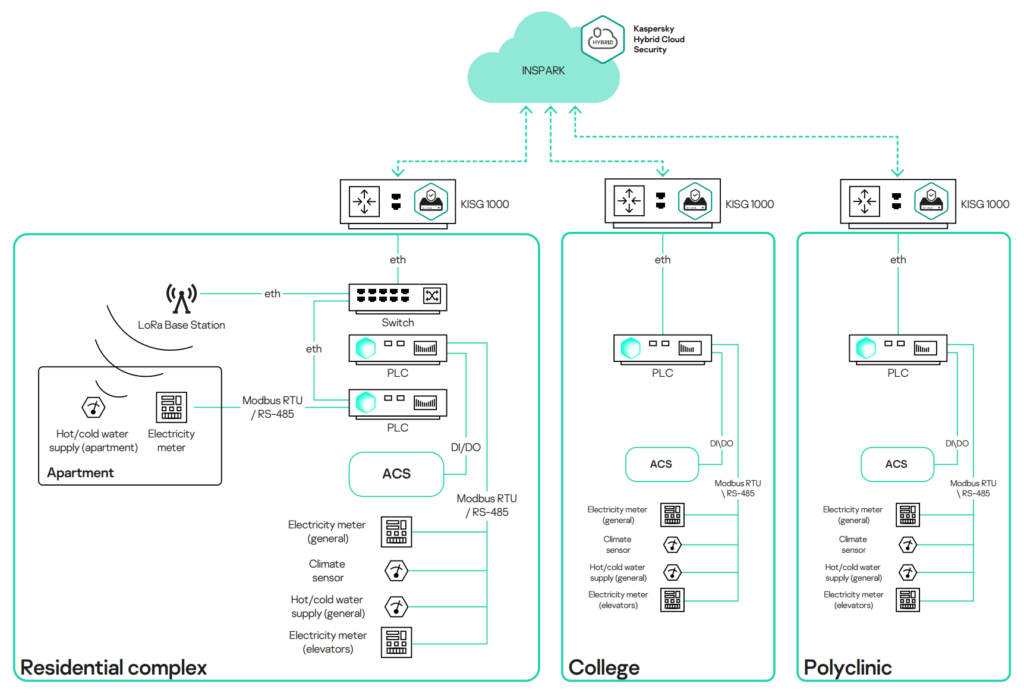


Based on the threat model that was created, Kaspersky developed an approach that makes use of several solutions for protection at different levels of the urban IoT infrastructure.
| The cloud level is protected by Kaspersky Hybrid Cloud Security. This comprehensive solution for automated protection of hybrid cloud infrastructure performs the following functions:
|
|
| The data transfer channel from the controller (PLC) to the cloud is protected by Kaspersky IoT Secure Gateway (KISG) 1000. This gateway is based on the technologies of KasperskyOS. It not only has Cyber Immunity – innate protection against cyberattacks – but also helps ensure the security of the entire IoT infrastructure. The Kaspersky Security Center platform allows you to centrally manage KISG 1000 and track its events. Together, these two products form Kaspersky IoT Infrastructure Security.
Kaspersky IoT Secure Gateway 1000 detects and classifies all devices on the network. The gateway has firewall functions and protects against network attacks (IDS/IPS). It also provides the means to receive, scan and distribute sensor messages received via the MQTT protocol. |
|
 |
The SEM Pro 5 controller, developed by Information Systems and Strategies, is installed as a PLC. The pre-installed KasperskyOS operating system ensures data intergrity: prevents data tampering, securely downloads firmware updates and protects certificates and controller policies. |
In order to build an urban IoT infrastructure, three objects with different social functions were identified with the participation of the Ministry of Digital Development and Communications of the Orenburg Region:
| Apartment building (155/6 Pobedy Ave.) | |
| Polyclinic of Orenburg Regional Clinical Hospital №2 (24 Nevelskaya Street) | |
| Orenburg College of Economics and Informatics (11 Chkalova Street) |
Work was carried out at the various sites to install sensors and controllers along with the means of transmitting the collected data and their visualization:
Testing of a smart city digital control room is a long-term project. Its effectiveness directly depends on the reliability of the entire IoT infrastructure. Kaspersky’s technologies have helped protect it from cyberattacks at all levels.
 Protection of public utilities systems in Orenburg using Kaspersky technologies
Protection of public utilities systems in Orenburg using Kaspersky technologies
In the process of using the control room, the following results are expected:
Thanks to the cloud control room, it’s possible to centrally collect relevant indicators from public utility services and monitor them comprehensively, consolidating data on a single platform.
All this also makes it possible to monitor the actual consumption of resources online, increasing the transparency of public services and, as a consequence, the level of trust in them.